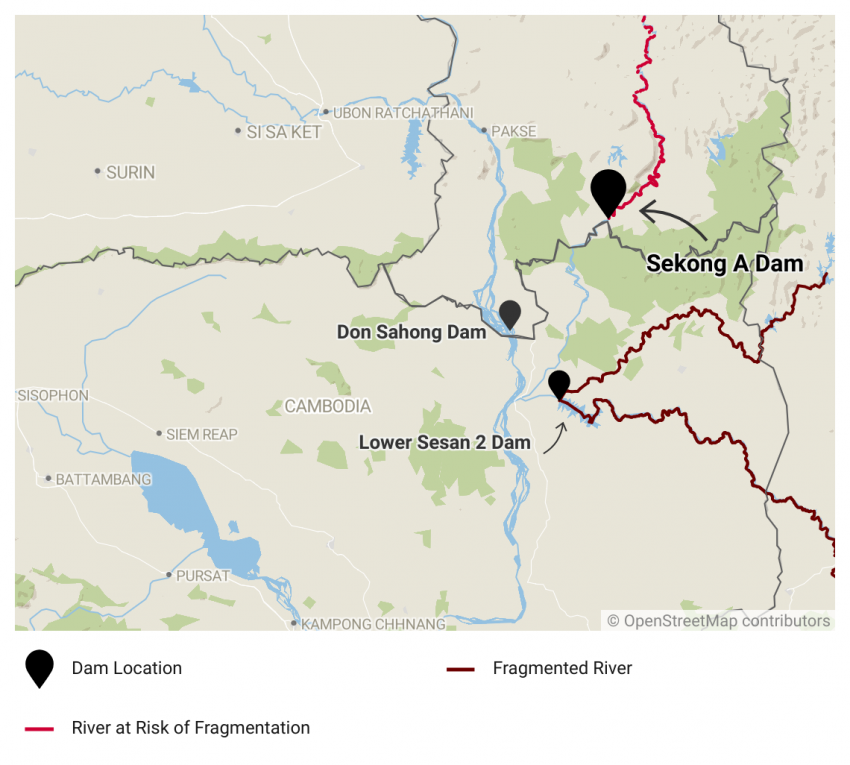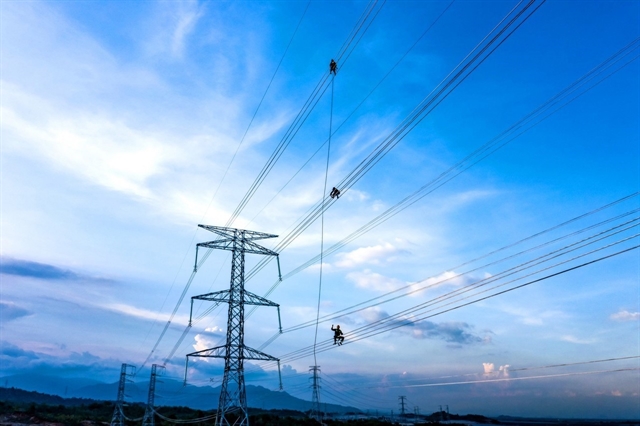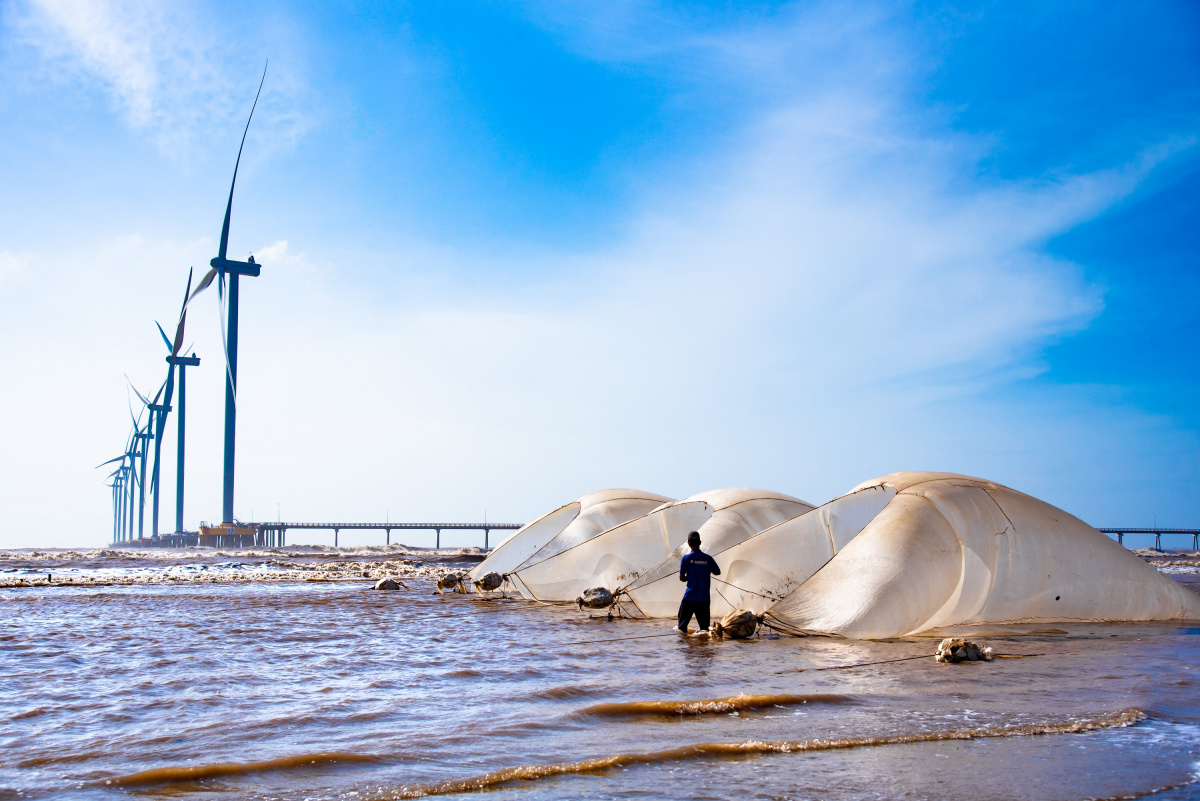Vietnam’s COP26 commitments: a moment of truth
Vietnam’s commitments at COP26 offer an ambitious agenda to de-carbonize the economy by avoiding new coal plants and transitioning towards clean energy. This is a significant departure from existing energy plans and an indication that Vietnam has made the political decision to move to a more diverse and less carbon-intensive energy mix. In doing so, Vietnam also has the opportunity to reduce threats to the Mekong Delta by importing power from Lao PDR that excludes high-risk dams and prioritizes imports from solar, wind, and low-impact hydropower plants.

Photo: Sekong river tributary in Cambodia © IUCN Viet Nam
Table of Commitments and Details here: https://datawrapper.dwcdn.net/9XNqG/1/
At COP26, Prime Minister Pham Minh Chinh emphasized the need to put climate change and environmental management at the center of economic development. He signed onto a UK-led commitment to accelerate the clean energy transition and move away from coal. These commitments build on the recent boom in solar and wind power and the need to ensure Vietnam’s competitiveness in a world where low-carbon energy and environmental sustainability are key for attracting international investment. In 2020, the Communist Party of Vietnam passed Resolution 55 on the Orientation of Viet Nam’s National Development Strategy to 2030 and Outlook to 2045, which provides a legal basis for Vietnam’s transition to renewable energy.
Vietnam’s commitment to building no new coal projects beyond those already under development will require far reaching changes. Coal currently makes up about one-third of total energy capacity and many projects are already under construction. The most recent draft of Power Development Plan 8 in October 2021 proposes an additional 41,000 MW of coal capacity by 2030. Only 30,000 MW is accounted for by projects that already exist or are under construction. Vietnam therefore needs to find 10,000 MW of alternative non-coal power sources. Filling this gap requires a much greater investment in natural gas, renewables, and power imports.
Infographic showing the gap of formerly planned coal projects:
 Photo: impacts of COP26 commitment on Viet Nam's power mix © the Stimson Center
Photo: impacts of COP26 commitment on Viet Nam's power mix © the Stimson Center
A dramatic expansion of renewable energy is possible over the next decade: Vietnam increased its installed solar capacity from almost zero in 2017 to 18,000 MW by the end of 2021. Technical challenges remain relating to energy storage, transmission, and grid reliability. But the biggest challenge is regulatory. To date, Vietnam’s success in expanding solar and wind has been driven by domestic and regional financing. But to add the next 18,000 MW and beyond requires Vietnam to tap into international financing, which is effectively shut out of the market by power purchase agreement terms and a lack of clarity about future power regulations and pricing that represent unacceptable risk to international energy businesses and fund managers. International funds will only flow after policy and regulatory adjustments ensure bankable power purchase agreements.
Infographic showing solar expansion year by year: https://datawrapper.dwcdn.net/iCV06/1/
Vietnam plans to meet future power demand by importing more energy from Lao PDR. This can be done in ways that either promote or threaten the integrity of the Mekong River system, which underpins the region’s extraordinary agricultural and fisheries productivity. Vietnam’s choices about which projects to support can be used to maintain long stretches of free-flowing river by avoiding sourcing power from badly placed hydropower projects. A Lao hydropower project with potentially huge environmental impacts is the Sekong A dam, which is being built by the Vietnamese company Song Da 6. This dam would disconnect the Sekong River, the last free-flowing major tributary of the Mekong, displace 5,000 people, and negatively impact fish and sediment for only 86 MW of power. By strategically selecting lower-impact hydropower projects or solar and wind farms in southern Lao PDR, Vietnam can increase power imports while avoiding unnecessary impacts on agriculture and fisheries.
Infographic showing location of Sekong A dam:
 Photo: Sekong A Dam and connectivity © the Stimson Center
Photo: Sekong A Dam and connectivity © the Stimson Center
Opportunities to increase non-hydro energy imports are growing. Vietnam and Lao PDR have negotiated the first cross-border trade deal for wind energy in ASEAN, setting a precedent for regional trade in solar and wind as the ASEAN Power Grid starts to take shape. Cambodia, Lao PDR, and Vietnam have the opportunity to coordinate energy planning and investment to help all three countries achieve energy security while minimizing social and environmental costs. A study by IUCN and Stimson Center on energy options in the Sekong-Sesan-Srepok River Basins shows that international cooperation on energy planning is vital to maximizing mutual benefits.
Wind and solar potential for Cambodia, Lao PDR and Viet Nam side by side: see the below maps
 Photo: Wind and solar power potential © the Stimson Center
Photo: Wind and solar power potential © the Stimson Center
In coming months, we will produce a series of web stories on how Vietnam can implement its COP26 energy commitments in the energy sector while minimizing environmental impacts. These will cover international finance for renewables, grid integration, expanding wind in Vietnam’s electricity mix, Cambodia-Lao PDR-Vietnam power trade, and why saving the Sekong is so important.
This is part one of six web stories produced by the Stimson Center and IUCN under the Swiss Agency for Development and Cooperation BRIDGE (Building River Dialogue and Governance), a global hydro-diplomacy project that IUCN is facilitating in 15 transboundary river basins, including the Mekong. For the other five webstories, please see:
#2: The Sekong A dam in Lao PDR and the Mekong Delta: a moment of decision for Viet Nam
#3: Unlocking international finance for Vietnam’s renewable energy transition
#4: Opportunities and challenges in expanding wind in Vietnam’s electricity mix
#5: Grid integration of renewables
#6: Regional cooperation on electricity trade



